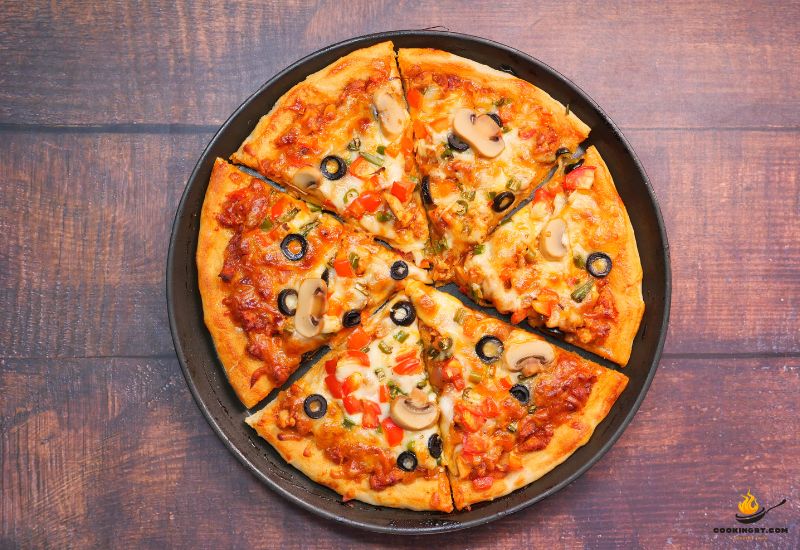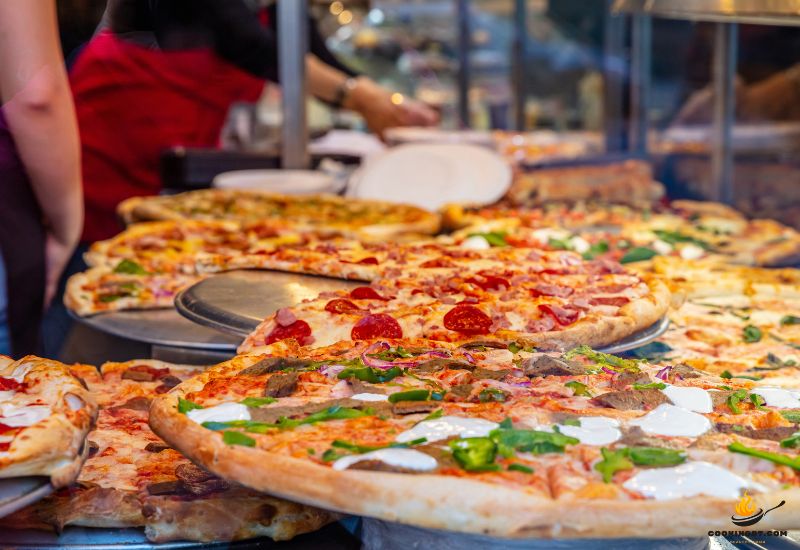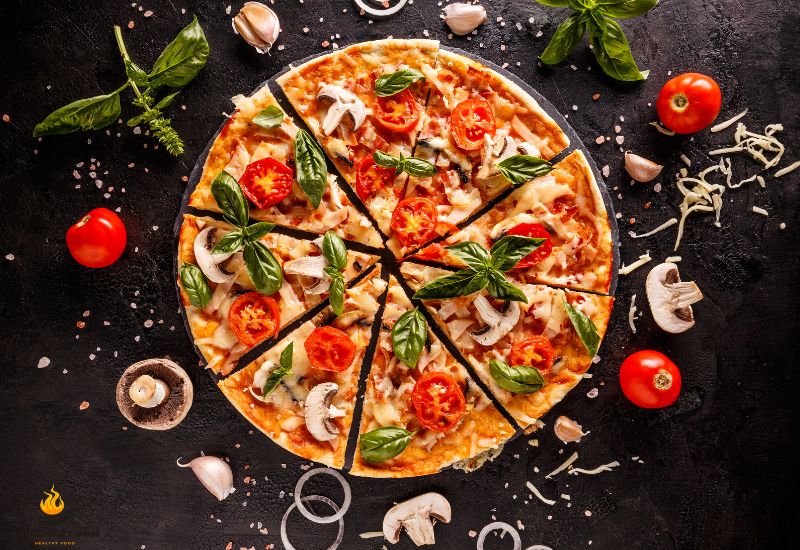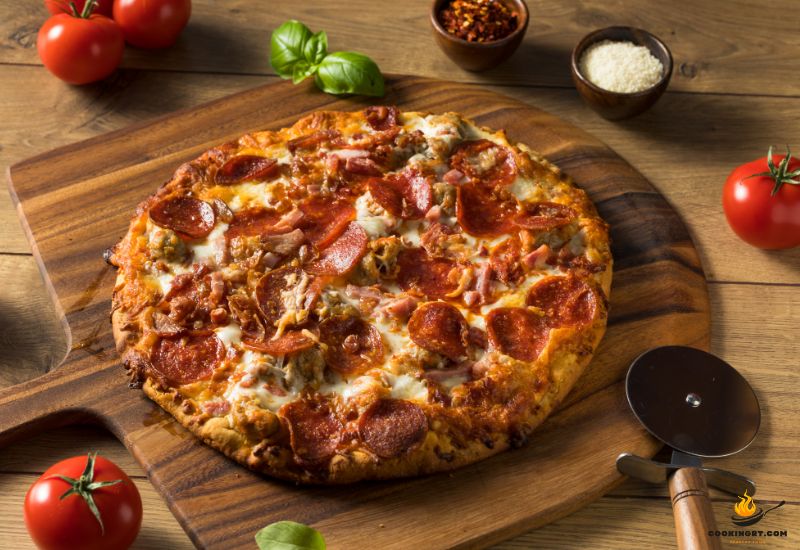Pizza, one of the world’s most beloved foods, is enjoyed in countless variations and styles. From the thin, crisp bases of a classic Italian pizza to the thick, rich slices of deep-dish American pizzas, this versatile dish can suit almost every taste and occasion. But with its popularity comes a common question asked by many health-conscious individuals: “How many calories are in a slice of pizza?” This seemingly simple question can have a variety of answers depending on several factors, including the type of pizza, the size of the slice, and the toppings used. In this article, we will explore the caloric content of different types of pizza slices and provide insight into how this favorite treat fits into a balanced diet.
Understanding Calories

Calories serve as a unit of measurement for energy derived from food and beverages. They are essential for sustaining vital bodily functions, including metabolism, movement, and organ function. Understanding the role of calories is crucial for managing weight and overall health.
When we consume food, our bodies break down macronutrients carbohydrates, fats, and proteins to release energy. This energy is measured in calories. Each macronutrient provides a different number of calories per gram:
- Carbohydrates: 4 calories per gram
- Protein: 4 calories per gram
- Fat: 9 calories per gram
In addition to providing energy, calories also influence body weight. Consuming more calories than the body needs for its daily functions results in weight gain, while consuming fewer calories leads to weight loss. Finding the right balance of calorie intake is essential for maintaining a healthy weight and overall well-being.
Overview of Pizza Components
A typical slice of pizza consists of four main components:
Dough: The base of the pizza, usually made from a simple mixture of flour, water, yeast, and salt. It serves as the crust, which can be crafted to be thin and crispy or thick and chewy, depending on the style.
Sauce: Most commonly, pizza sauce is a tomato-based sauce seasoned with herbs like oregano and basil. However, variations might include creamy white sauces, pesto, or even BBQ sauce, depending on the style of pizza.
Cheese: Mozzarella is the most popular cheese used on pizzas, prized for its mild flavor and excellent meltability. Other cheeses, such as cheddar, provolone, or a blend of several cheeses, can also be used for different flavor profiles and textures.
Toppings: These can vary widely and include vegetables (such as peppers, onions, and mushrooms), meats (like pepperoni, sausage, and bacon), and sometimes more unique options like pineapple, anchovies, or various gourmet ingredients. Toppings allow for customization and play a significant role in the flavor and appeal of a pizza.
Calorie Content Variation in Pizza

The calorie content of a slice of pizza can vary significantly based on several factors:
Crust Thickness: The thickness of the pizza crust greatly affects the calorie count. A thin crust contains fewer calories than a thick, deep-dish style crust because it uses less dough, which is primarily made of flour (a high-calorie ingredient).
Type of Cheese: The type of cheese used can also impact the caloric makeup of a pizza. Full-fat cheeses like traditional mozzarella contribute more calories than reduced-fat versions. Some cheeses naturally contain more fat and calories than others, influencing the overall calorie count of the pizza.
Toppings: The choice of toppings can dramatically change the calorie content of a pizza slice. Vegetable toppings typically add fewer calories compared to meat toppings like pepperoni, sausage, or bacon, which are higher in fat and calories. Additionally, the quantity of toppings used can also affect the total calorie count.
Because of these variables, the calorie content of a pizza slice can range widely, often from about 200 to 400 calories per slice, but specialty or more indulgent varieties can exceed this range. Understanding these factors can help pizza lovers make choices that fit their dietary preferences and restrictions.
Calorie Content of a Standard Slice of Cheese Pizza
A typical slice of cheese pizza from a medium-sized (14-inch) regular crust pie generally contains between 230 to 280 calories. This range can vary based on factors like the thickness of the crust, the type of cheese used, and how generously the cheese is applied.
Variations in Calorie Counts for Different Types of Pizza h3
Pepperoni Pizza
A slice of pepperoni pizza from a similar 14-inch pie typically contains about 250 to 300 calories. Pepperoni adds more calories due to its fat content. The oils released from pepperoni during baking not only add flavor but also increase the calorie density of each slice.
Veggie Pizza
A veggie pizza slice might range from 200 to 250 calories for a slice from a 14-inch pizza. The calorie count is usually lower because vegetables are less calorie-dense than meats and cheeses. Common
toppings like bell peppers, onions, mushrooms, and olives contribute fewer calories, but provide fiber and a variety of nutrients, making this a lower-calorie but nutritious option.
Meat Lovers Pizza
A meat lovers pizza is one of the higher calorie options due to the variety of meats used as toppings, such as sausage, bacon, ham, and extra pepperoni. A typical slice from a 14-inch pizza can easily range from 300 to 400 calories. The high fat content of the meats significantly increases the calorie count.
Additional Considerations
Crust Type: Beyond the basic thick or thin crust, there are other varieties like stuffed crust, which usually contains cheese or even meats like pepperoni stuffed into the crust, significantly raising the calorie content.
Cheese Amount: More cheese or a blend of cheeses can increase the calorie content, as cheese is typically high in fat.
Sauce Variations: While most traditional pizzas use a simple tomato-based sauce, variations like creamy alfredo or rich pesto can also increase calorie counts due to higher fat content.
These variations underline the importance of considering all elements of a pizza when estimating its calorie content. Calorie counts can help individuals make informed decisions based on their nutritional goals, whether they’re trying to consume less energy or simply aiming for more balanced dietary choices.
Factors Affecting Caloric Content of Pizza

Portion Size
Larger portions contain more calories simply because they contain more food. A larger slice of pizza will have more dough, sauce, cheese, and toppings, resulting in a higher calorie count compared to a smaller slice.
Serving Style
Thin Crust vs. Deep Dish: Thin-crust pizzas typically have fewer calories per slice than deep-dish pizzas. Thin crusts use less dough, which is a significant contributor to calories in pizza. Deep-dish pizzas have a thicker crust, often with more cheese and toppings, resulting in a higher calorie count per slice.
Restaurant vs. Homemade Pizza
| Aspect | Restaurant Pizza | Homemade Pizza |
| Ingredients | May use commercial sauces, pre-made dough, and processed cheese. | Offers flexibility in ingredient selection and quality control. |
| Calorie Content | Often higher due to generous toppings and thicker crusts. | Can be adjusted based on portion size and choice of toppings. |
| Cost | Typically more expensive, factoring in labor and overhead costs. | Generally more cost-effective, especially when making multiple servings. |
| Customization | Limited customization options, although some restaurants offer build-your-own options. | Complete control over toppings, crust thickness, and flavor combinations. |
| Convenience | Convenient option for dining out or ordering delivery. | Requires time and effort for preparation, cooking, and cleanup. |
| Freshness | May vary depending on restaurant practices and ingredients. | Fresher ingredients can be used, offering a potentially higher quality product. |
| Portion Control | Portions may be larger, leading to potential overconsumption. | Portion sizes can be tailored to individual preferences. |
| Health Considerations | Often higher in sodium, saturated fat, and calories. | Allows for healthier ingredient choices and portion control. |
Summary of Key Points on Calorie Content of Pizza

Calorie Variation: The calorie content of a slice of pizza can vary significantly based on crust thickness, types of cheese used, toppings, and whether the pizza is homemade or from a restaurant.
Crust Styles: Thin crust pizzas generally have fewer calories than their thick crust or deep-dish counterparts due to less dough being used.
Toppings: Choices in toppings heavily influence the nutritional content; vegetable toppings tend to add fewer calories compared to meat toppings, which are higher in fat and calories.
Restaurant vs. Homemade: Restaurant pizzas often come in larger portions and can be higher in calories due to richer ingredients and more generous topping portions. Homemade pizzas allow for more controlled ingredient selection and portion sizes, potentially making them a healthier option.
Implications for Health and Nutrition
Moderation and informed choices are key when incorporating pizza into a healthy diet. Considering its variability in calorie content, pizza can fit into dietary plans if consumed thoughtfully:
Balanced Eating: Integrating pizza into a balanced diet involves being mindful of what it’s paired with. Complementing a pizza meal with a side salad or vegetables can help balance the meal.
Portion Control: Pay attention to portion sizes to avoid excessive calorie intake. Opting for one or two slices and saving the rest for later can help manage calorie consumption.
Healthier Choices: Opt for whole-grain crusts, reduced-fat cheeses, and plenty of vegetables as toppings. When possible, reduce high-calorie meats and cheeses.
Encouragement for Pizza Lovers

Enjoying pizza doesn’t have to conflict with your dietary goals. By making informed choices about the type of pizza and the quantity you consume, you can indulge in this popular dish while still supporting your health and nutrition objectives. Whether you’re dining out or making pizza at home, take an active role in selecting ingredients that fit within your dietary needs. Remember, moderation is key enjoy your slice of pizza but balance it with healthy, nutrient-rich foods to ensure a well-rounded diet.
Conclusion
The calorie count of a slice of pizza varies widely depending on the preparation and ingredients. A typical slice from a restaurant may range from 200 to 300 calories, with additional toppings increasing the count. Homemade pizza offers more control over ingredients and can be a healthier option by using whole grain dough, fresh vegetables, and reduced-fat cheese.
Moderation and mindful choices are key when incorporating pizza into a balanced diet. By understanding the nutritional impact and making informed decisions about toppings and portion sizes, pizza can be enjoyed as part of a healthy lifestyle. Whether it’s a gourmet creation from a restaurant or a customized homemade pie, pizza remains a versatile and enjoyable dish.
Q: How do toppings affect the calorie content of pizza?
Ans: Toppings can significantly impact the calorie content of pizza. For example, while vegetables like mushrooms or bell peppers are low in calories, meat toppings like pepperoni or sausage can add extra calories due to their higher fat and protein content. Specialty toppings like extra cheese or bacon can also contribute to increased calorie counts.
Q: Does the type of crust affect the calorie count of pizza?
Ans: Yes, the type of crust can influence the calorie content of pizza. Generally, thinner crusts tend to have fewer calories than thicker crusts like deep dish or stuffed crust. Crusts made with whole wheat or cauliflower can also offer lower calorie options compared to traditional white flour crusts.
Q: How can I estimate the calorie content of a homemade pizza?
Ans: To estimate the calorie content of a homemade pizza, you can use online calorie calculators or reference nutritional information for individual ingredients. By adding up the calories for the dough, sauce, cheese, and toppings, you can get a rough estimate of the total calorie count per slice.
Q: Are there any ways to make pizza healthier without sacrificing flavor?
Ans: Yes, there are several ways to make pizza healthier while still enjoying delicious flavors. Opting for whole grain crusts, loading up on vegetables as toppings, choosing lean protein options like grilled chicken or turkey, and using reduced-fat cheese are all great ways to reduce calories without compromising taste.
Q: Is it okay to indulge in pizza occasionally if I’m watching my calorie intake?
Ans: Yes, indulging in pizza occasionally can fit into a balanced diet, especially if you make mindful choices about toppings and portion sizes. Remember that moderation is key, and balancing pizza consumption with plenty of nutrient-rich foods like fruits, vegetables, whole grains, and lean proteins is important for overall health and nutrition.


